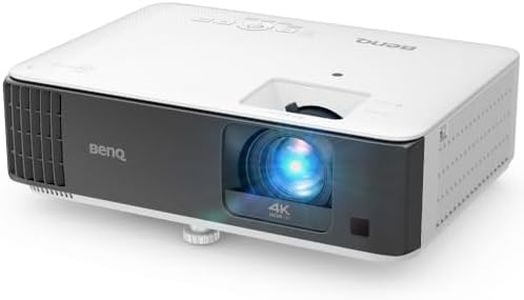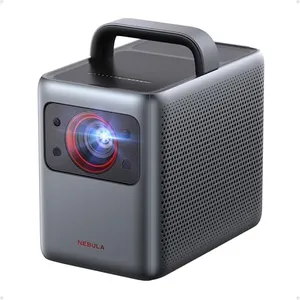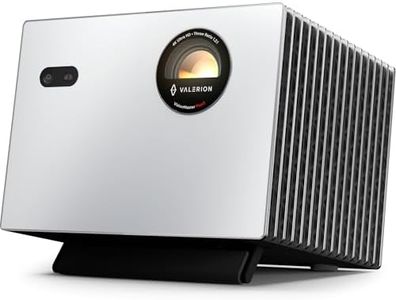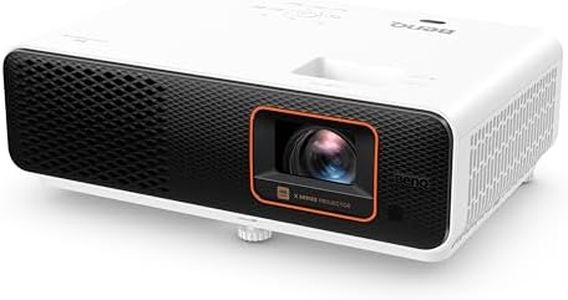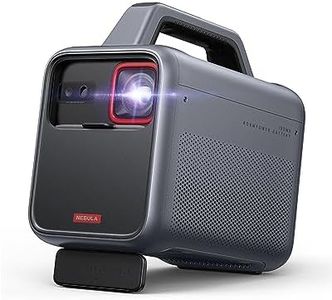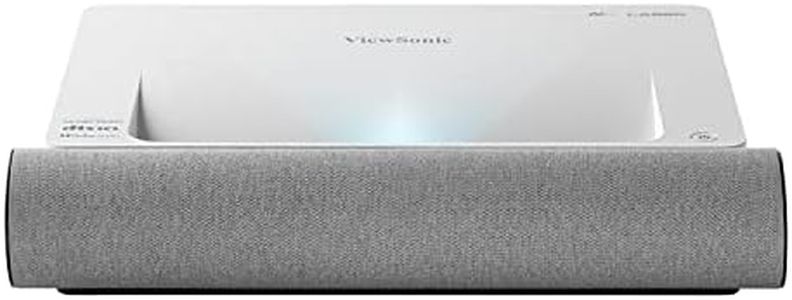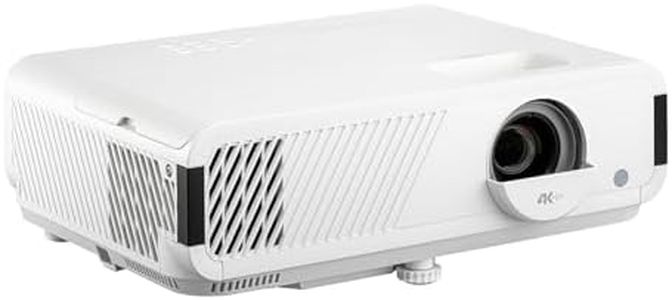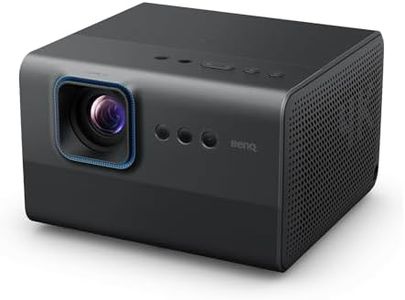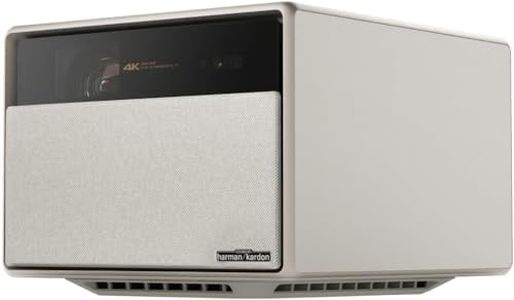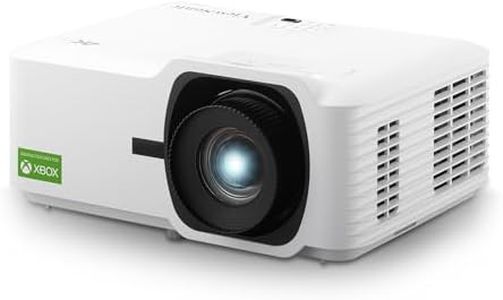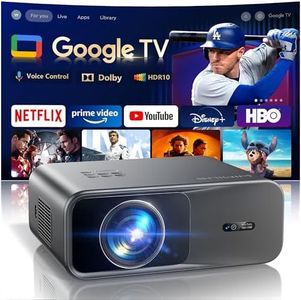We Use CookiesWe use cookies to enhance the security, performance,
functionality and for analytical and promotional activities. By continuing to browse this site you
are agreeing to our privacy policy
10 Best Gaming Projectors
From leading brands and best sellers available on the web.Buying Guide for the Best Gaming Projectors
When choosing a gaming projector, the goal is to find a device that can deliver a vivid, smooth, and lag-free experience that enhances your gameplay. Projectors offer a large, immersive screen size compared to traditional monitors or TVs, but you need to check several technical aspects to ensure you get the best performance for your style of gaming. Think about the space where you'll use the projector, what kinds of games you play, and the type of device you'll connect. By focusing on the right specifications, you can make sure your projector meets your needs and keeps up with fast-paced or visually demanding games.Input LagInput lag is the time it takes for your actions on a controller or keyboard to be shown on the screen. This is one of the most crucial specs for gaming projectors because high input lag can make games feel unresponsive or sluggish, especially in fast-paced or competitive games. Input lag is measured in milliseconds (ms). Values under 20ms are generally great for competitive gaming, 20-40ms is acceptable for most gamers, while anything higher might affect fast games like shooters or racing games. If you mostly play story-driven or slow-paced games, a bit more lag won't ruin your experience, but try to get the lowest input lag possible for versatility.
Refresh RateRefresh rate refers to how many times per second the projector can update the image, measured in hertz (Hz). A higher refresh rate means smoother visuals, which is very noticeable in action games or when playing at high frame rates. Common projector refresh rates are 60Hz, which is fine for casual play, 120Hz for smoother action and better performance, and gaming-focused models may go even higher. Choose a higher refresh rate if you play fast games or use powerful consoles/PCs, while 60Hz is alright for casual or turn-based games.
ResolutionResolution is the number of pixels displayed, affecting clarity and sharpness. Higher resolution means a clearer image, especially on big screen sizes. Standard resolutions include 1080p (Full HD), 1440p (Quad HD), and 2160p (4K Ultra HD). 1080p is good for most setups and smaller spaces, 4K offers very sharp images and is best if you want the most detailed visuals and have a large projection area. Pick a resolution that matches the power of your gaming system and how close you’ll be sitting.
Brightness (Lumens)Brightness, measured in lumens, determines how well images appear in different lighting conditions. The higher the lumens, the better the projector works in brighter rooms. Under 2000 lumens is suitable for dark rooms, 2000–3500 lumens works in rooms with some light, and above 3500 lumens is great for rooms where you can’t control lighting much. If you want to play during the day or with lights on, go for a brighter projector. If you play mostly in a dedicated, dark gaming space, lower brightness is fine.
Contrast RatioContrast ratio measures the difference between the darkest black and the brightest white a projector can produce. A higher contrast ratio delivers better detail and color depth, important for dark scenes or visually rich games. Ratios of 10,000:1 and above are common; higher is better for more vibrant, realistic visuals. If you enjoy games with lots of dark environments or cinematic visuals, aim for a higher contrast ratio. For brightly colored or retro games, this matters less.
Throw Distance and Screen SizeThrow distance is how far the projector needs to be from the screen to produce a certain image size. Short-throw projectors can project a large image from close up, making them ideal for small rooms, while standard throw models need more space. Make sure to measure your room and pick a projector that fits. Larger screen sizes feel more immersive, but make sure the resolution and brightness are high enough to maintain quality at your chosen size.
ConnectivityConnectivity options include HDMI ports, audio outputs, and compatibility with gaming consoles or PCs. More HDMI ports mean you can connect more devices at once, while audio outputs are important if you want to use external speakers. Ensure the projector supports the latest HDMI standard for fast data transfer and minimal lag. Depending on your setup, wireless features like Bluetooth or Wi-Fi may also be helpful for streaming or connecting peripherals.

